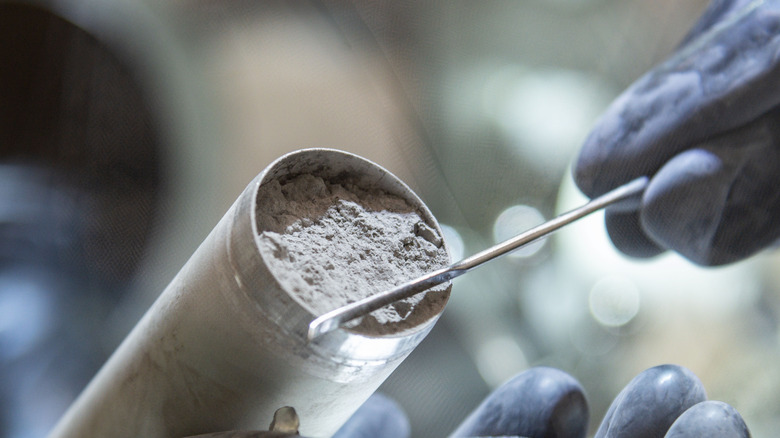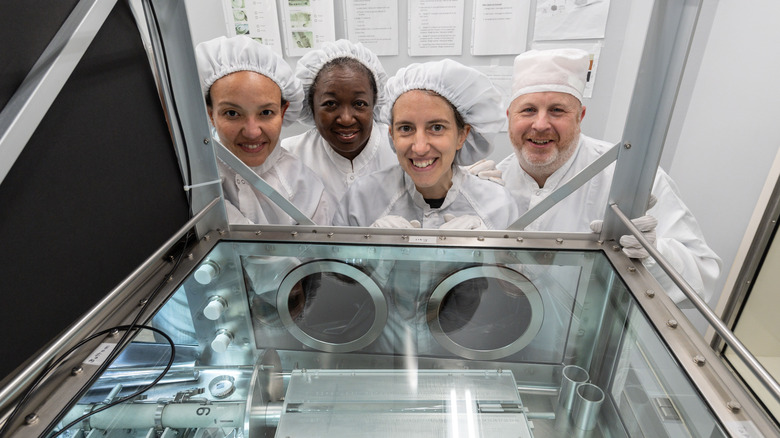NASA Just Cracked Open A 50-Year-Old Lunar Sample
NASA recently opened up a very special sealed time capsule: a tube containing a lunar sample, untouched for 50 years since it was collected by the Apollo 17 mission. The sample was opened to help researchers understand more about the history of the moon and how to effectively collect samples when astronauts return there under NASA's Artemis program. This particular tube of moon dust was extra special as it was in an airtight container, meaning the sample also contained gases collected on the moon. The team had to open the container very carefully in stages, beginning with piercing the container to ensure they captured any gases before they worked on the core sample. The process of extracting the gases began last month, and now the inner tube of the capsule has been opened up as well to reveal the sample of lunar rock and dust inside.
"We have had an opportunity to open up this incredibly precious sample that's been saved for 50 years under vacuum," said Thomas Zurbuchen, associate administrator of NASA's Science Mission Directorate in Washington, "and we finally get to see what treasures are held within." The sample, called 73001, was collected in December 1972 by NASA astronauts Eugene Cernan and Harrison "Jack" Schmitt, who hammered a collection device called a drive tube into the moon's surface, capturing layers of lunar rock which can reveal information about the moon's geological history.
How to extract a lunar sample
Before the sample was extracted, the team performed CT scans to see how the sample was composed inside. This gave them a record of how the material looked before they pushed it out. "This will be the permanent record of what the material inside the core looks like before it got pushed out and divided into half-centimeter increments," said Ryan Zeigler, Apollo sample curator (via NASA). "The drive tube was very full, which is one of the things we learned with the CT scans, and it caused a slight complication in how we were initially planning to extrude it, but we have been able to adapt using these scans."
The reason that NASA's Astromaterials Research and Exploration Science (ARES) Division chose to open the sample was both to learn about the moon's geology and to help with the planned Artemis mission. The Apollo Next Generation Sample Analysis Program is preparing for astronauts to travel to the moon's south pole and collect samples from there. Seeing how the previous sampling methods worked on the Apollo missions gives NASA insights on how it should approach taking samples for the Artemis missions, such as what tools to use. It also lets researchers access a very rare sample which can tell them about the history of the moon.
"We are the first people who got to actually see this soil for the first time," said deputy Apollo sample curator Juliane Gross. "It's just the best thing in the world — like a kid in the candy store, right?"

